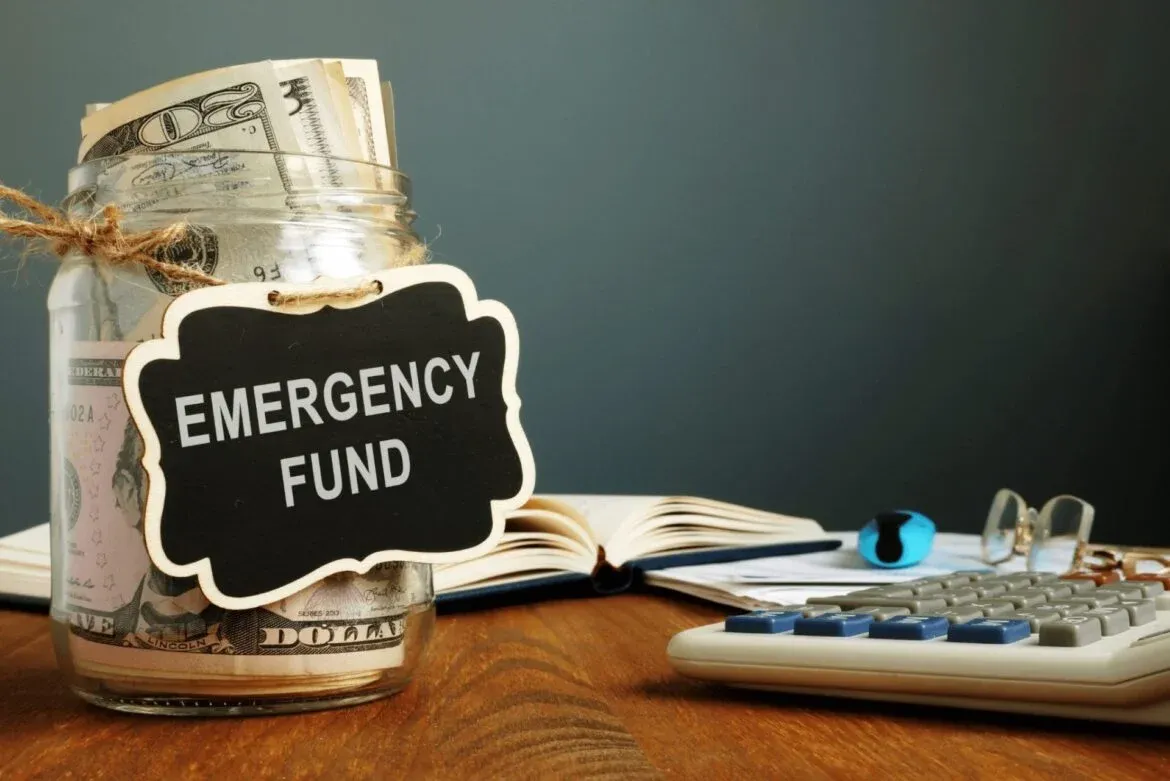

Starting an emergency fund is a crucial step in securing your financial future. It provides a safety net for unexpected expenses and peace of mind during challenging times. Let’s learn more about this topic below with Monkey Mart. In this comprehensive guide, we’ll explore effective strategies to build an emergency fund from scratch, even if you’re on a tight budget. We’ll cover everything from setting realistic goals to finding creative ways to save and grow your fund over time.
An emergency fund is a dedicated savings account designed to cover unexpected expenses or financial setbacks. It serves as a financial buffer, helping you avoid relying on high-interest credit cards or loans when faced with unforeseen circumstances. Having an emergency fund can provide peace of mind and financial stability, allowing you to focus on long-term financial goals without constantly worrying about potential emergencies.
The general recommendation is to save three to six months’ worth of living expenses in your emergency fund. However, the exact amount may vary depending on your individual circumstances, such as job stability, health conditions, and family responsibilities. It’s essential to assess your personal situation and determine an appropriate target for your emergency fund.
Building an emergency fund from scratch may seem daunting, especially if you’re already struggling to make ends meet. However, with the right strategies and mindset, it’s possible to gradually build a substantial safety net. Remember that every small contribution adds up over time, and consistency is key to achieving your financial goals.
Read more: Top Side Hustles in 2025 to Boost Your Income
Before you start building your emergency fund, it’s crucial to set realistic goals and create a solid plan. This will help you stay motivated and track your progress as you work towards financial security. Here are some steps to get started:
1. Assess your current financial situation: Take a close look at your income, expenses, and debt obligations. This will give you a clear picture of how much you can realistically save each month.
2. Determine your target amount: Based on your monthly expenses and personal circumstances, decide how much you want to save in your emergency fund. While the ideal goal is three to six months’ worth of expenses, start with a smaller, more achievable target if necessary.
3. Break down your goal into smaller milestones: Instead of focusing on the final target, which may seem overwhelming, set smaller milestones along the way. For example, aim to save $500, then $1,000, and so on.
4. Create a timeline: Establish a realistic timeline for reaching your emergency fund goal. This will help you stay accountable and motivated throughout the process.
5. Choose a dedicated savings account: Open a separate high-yield savings account specifically for your emergency fund. This will help you avoid the temptation to dip into the funds for non-emergency expenses.
6. Automate your savings: Set up automatic transfers from your checking account to your emergency fund savings account. This ensures that you consistently save without having to remember to make manual transfers.
Building an emergency fund requires discipline and creativity, especially when you’re starting from scratch. Here are some effective strategies to help you save money and grow your fund:
1. Cut unnecessary expenses: Review your monthly expenses and identify areas where you can cut back. This might include canceling unused subscriptions, reducing dining out, or finding more affordable alternatives for your regular purchases.
2. Create a bare-bones budget: Temporarily adopt a minimalist lifestyle by focusing only on essential expenses. This will help you free up more money to contribute to your emergency fund.
3. Increase your income: Look for ways to boost your earnings, such as taking on a part-time job, freelancing, or selling unwanted items. Dedicate this extra income directly to your emergency fund.
4. Use windfalls wisely: When you receive unexpected money, such as tax refunds, bonuses, or gifts, resist the urge to splurge and instead allocate a significant portion to your emergency fund.
5. Negotiate bills and expenses: Contact your service providers to see if you can get better rates on utilities, insurance, or other recurring expenses. Every dollar saved can be redirected to your emergency fund.
6. Embrace the cash envelope system: Use cash for discretionary spending categories like groceries and entertainment. This can help you stick to your budget and avoid overspending.
7. Try a savings challenge: Participate in a savings challenge, such as the 52-week challenge, where you save an increasing amount each week. This can make saving more engaging and fun.
8. Use cashback apps and rewards programs: Take advantage of cashback apps, credit card rewards, and store loyalty programs to earn extra money or discounts on your purchases. Funnel these savings directly into your emergency fund.
As you work on building your emergency fund, consider these strategies to maximize your savings potential:
1. Prioritize high-interest debt: If you have high-interest debt, such as credit card balances, consider tackling these first while still making small contributions to your emergency fund. Once the debt is paid off, redirect those payments to your savings.
2. Explore high-yield savings accounts: Look for savings accounts that offer competitive interest rates. While the difference may seem small, earning more interest on your savings can help your emergency fund grow faster over time.
3. Consider a CD ladder: Once you’ve built up a modest emergency fund, consider creating a CD ladder with a portion of your savings. This strategy involves opening multiple certificates of deposit with staggered maturity dates, potentially earning higher interest rates while maintaining some liquidity.
4. Reassess and adjust regularly: Review your budget and savings plan regularly to ensure you’re on track. As your income or expenses change, adjust your savings strategy accordingly.
Read more: What Is a Good Credit Score and How Can You Improve It?
Once you’ve established your emergency fund, it’s important to maintain and continue growing it over time. Here are some tips to help you stay on track:
1. Replenish after use: If you need to use your emergency fund, make it a priority to replenish the amount as soon as possible. This ensures that you always have a safety net available.
2. Regularly review and update your goal: As your life circumstances change, reassess your emergency fund target. You may need to increase your savings goal if you experience significant life events, such as having children or buying a home.
3. Avoid lifestyle inflation: As your income increases, resist the temptation to increase your spending proportionally. Instead, allocate a portion of any raises or bonuses to your emergency fund.
4. Keep your emergency fund separate: Maintain a clear distinction between your emergency fund and other savings goals. This helps prevent you from dipping into your emergency savings for non-emergency expenses.
5. Educate yourself about personal finance: Continuously improve your financial knowledge to make informed decisions about saving, investing, and managing your money. This can help you optimize your overall financial strategy, including your emergency fund.
6. Consider diversifying your emergency savings: As your emergency fund grows, you may want to explore other low-risk investment options for a portion of your savings. This could include money market accounts or short-term bond funds, which may offer slightly higher returns while still maintaining relatively easy access to your funds.
Building an emergency fund from scratch requires patience and perseverance. Here are some tips to help you stay motivated:
1. Celebrate milestones: Acknowledge and reward yourself when you reach important savings milestones. This positive reinforcement can help you stay committed to your goals.
2. Visualize your progress: Use a visual aid, such as a savings thermometer or a goal-tracking app, to monitor your progress. Seeing your emergency fund grow can be highly motivating.
3. Share your goals: Tell friends or family members about your emergency fund goals. Having a support system can provide encouragement and accountability.
4. Focus on the benefits: Regularly remind yourself of the peace of mind and financial security that comes with having a well-funded emergency savings account.
5. Learn from setbacks: If you encounter obstacles or temporary setbacks, view them as learning opportunities. Analyze what went wrong and adjust your strategy accordingly.